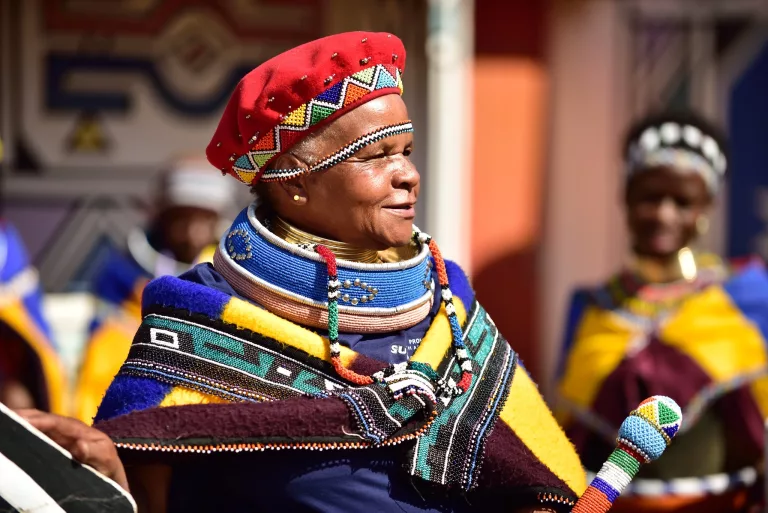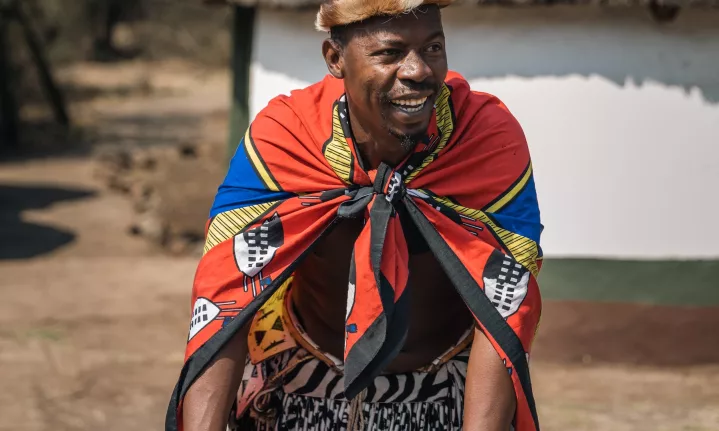The 10-Minute Rule for South African Culture Today
The 10-Minute Rule for South African Culture Today
Blog Article
The Buzz on South African Culture Today
Table of ContentsSouth African Culture Today Fundamentals ExplainedSouth African Culture Today Can Be Fun For AnyoneFascination About South African Culture TodayThe South African Culture Today IdeasMore About South African Culture TodayThe 45-Second Trick For South African Culture Today
This follows with singing and drum whipping. The couple after that meet with the senior citizens and speak about the importance of their union. An issue of relevance in Zambian villages is the passing away of enjoyed ones. All members of the village placed cash, time and effort together for the funeral of the deceased.Songs and dancing is a really important aspect of the Zambian society. The various tribal units have their own dance forms; however, makishi is common among all people.
Rumored Buzz on South African Culture Today
When it concerns songs, drums are utilized the most, with a selection of drumming events. In Zambia, majority of individuals are Christian; Protestant and Roman Catholic. There are little groups of Muslims and Hindus, with the rest complying with local indigenous tribal beliefs.

South African heritage and culture is profoundly varied, and contains numerous different groups of people who each have their own customs and beliefs. Having such a diversity of individuals and cultures is what makes South Africa so distinct. In truth feeling of the phrase, we are a rainbow nation.
South Africa has roughly three hundred thousand Portuguese people residing in it. Making it the 7th on the checklist of nations with one of the most Portuguese individuals in it outside of Portugal. Portuguese is not only a culture, however it is likewise a language and a citizenship. Portuguese people originate from the country of Portugal in Europe, however, due to Portugal (like many other countries in Europe) exploring the world and conquering other nations throughout the 15th 20th centuries, South Africa has what we call Portuguese South African's living in it.
The Of South African Culture Today
Amongst the famous features of the topography is a plateau that covers almost two thirds of the facility of the country. The plateau facility climbs toward the southeast, where it climaxes in the Drakensberg array, part of an escarpment that separates the plateau from the seaside areas. The Drakensburg consists of Sparkling wine Castle, the highest possible height in the nation.
The area north of the Witwatersrand, called the bushveld, inclines downward from east to west towards the Limpopo River, which creates the international boundary. The western section of the plateau, the middleveld, likewise descends in the direction of the west and varies in altitude between the highveld and bushveld. Between the Drakensburg and the eastern and southern shoreline, the land descends to the sea.
Nearer the shore there is a low-lying plain called the eastern lowveld. Southwest of the plateau the nation ends up being considerably more arid, offering way to the stony desert of the Great Karroo, approached the east by the lower, better sprinkled plateau of the Little Karroo. Dividing the dry southerly interior from the sandy littoral of the southern coast and West Cape is another range, the Langeberg.
The 9-Second Trick For South African Culture Today
The country's racially, ethnically, and politically split background has generated nationwide and subnational icons that still work as symbols of the country, and others icons that are approved just by certain teams. The monoliths to white inhabitant occupation and political dominance, such as the Afrikaner Voortrekker ("pioneer") Monument in Pretoria and the Rhodes Monument honoring the British colonial empire contractor and Cape head of state Cecil Rhodes, stay sectarian signs.
The first modern inhabitants were the San ("bushman") hunter-gatherers and the Khoi ("Hottentot") peoples, that rounded up animals (South African culture today). The San might have been existing for countless years and left evidence of their presence in thousands of ancient cavern paints ("rock art"). Bantu-speaking clans that were the ancestors of the Nguni (today's amaZulu, amaXhosa, amaSwazi, and vaTsonga individuals) and Tswana-Sotho language teams (today's Batswana and Southern and Northern Basotho) migrated below eastern Africa as early as the fifteenth century

The two former republics of the Orange Free State and Transvaal (South African Republic) were developed by Afrikaner settlers that defeated and dispossessed the Basotho and Batswana. Lesotho would certainly have been forcibly included into the Orange Free State without the expansion of British protection in 1869. The best unification of the nation resulted from the South African Battle (18991902) between the British and the two Afrikaner republics, which lowered the nation to mess up at the beginning of the twentieth century.
Afrikaners historically considered themselves the just real South Africans and, while approving full citizenship to all citizens of European descent, rejected that condition to people of color up until the democratic shift of 1994. British South Africans preserve a sense of cultural and social link to Great Britain without deteriorating their identity as South Africans.
Getting The South African Culture Today To Work
The variety and fragmentation within ethnic groups and the equilibrium of tensions between those teams throughout the twentieth century prevented interethnic civil problem. site here While intergroup tensions over resources, privileges, and political prominence stay, those disputes are as most likely to match Zulu against Zulu as Zulu additional reading against Xhosa or African against Afrikaner.
From colonial India, British vendors and managers brought the bent steel decorative roofs and slender lace job columns that still symbolize the outdoor patios of homes arounds and cities throughout the nation. Holy places add a crucial architectural aspect also in the smallest towns. Along with the rising steeples and timeless stonework of Afrikaans Dutch Reformed churches, Anglican churches, synagogues, mosques, and Hindu shrines offer variety to the spiritual architectural scene.

Butchering and the brewing of typical cereal beer are crucial in protecting the engagement and goodwill of the ancestors who are taken into consideration the guardians of good lot of money, prosperity, and wellness. Indian communities keep their native culinary customs and apply them on Islamic and Hindu ritual and ceremonial events. Afrikaners and Coloured individuals gather at weekends and special events at multifamily bbqs called braais, where community bonds are strengthened.
Since this was the key economic enterprise of both black Africans and white colonists, dispute in between those groups fixated the possession of grazing land and animals. In 1867, the biggest ruby deposits in the globe were discovered at Kimberley in the west central area. The wide range from those fields assisted fund the exploitation of the biggest gold coral reef in the globe, which was found on the Witwatersrand in 1886.
The Best Guide To South African Culture Today
This resulted in misconceptions and calculated misstatement in the dealings of white inhabitants and government authorities with African chiefs during the early american duration (South African culture today). In the establishment of African gets, hop over to here some facets of public and primarily "tribal count on" land tenure were preserved, and also in white country locations, kinds of public tenure were still practiced in areas with African neighborhoods
After the autonomous transformation of 1994, programs for land restitution, redistribution, and reform were instituted, however progress has been slow-moving. The white minority still regulates eighty percent of the land. Following farming land intrusions in Zimbabwe, the Department of Land Affairs has pledged to speed up land redistribution.
Report this page